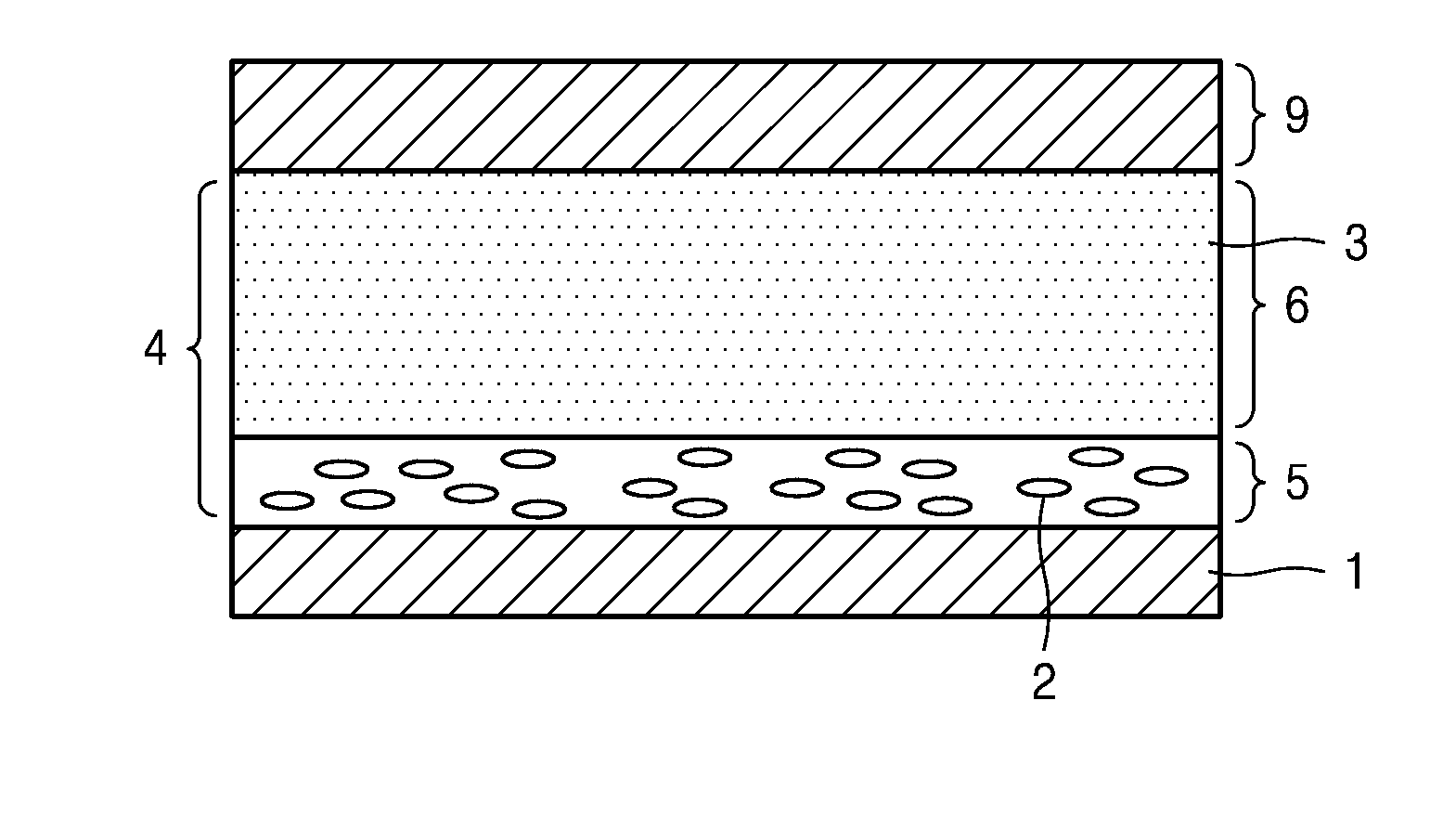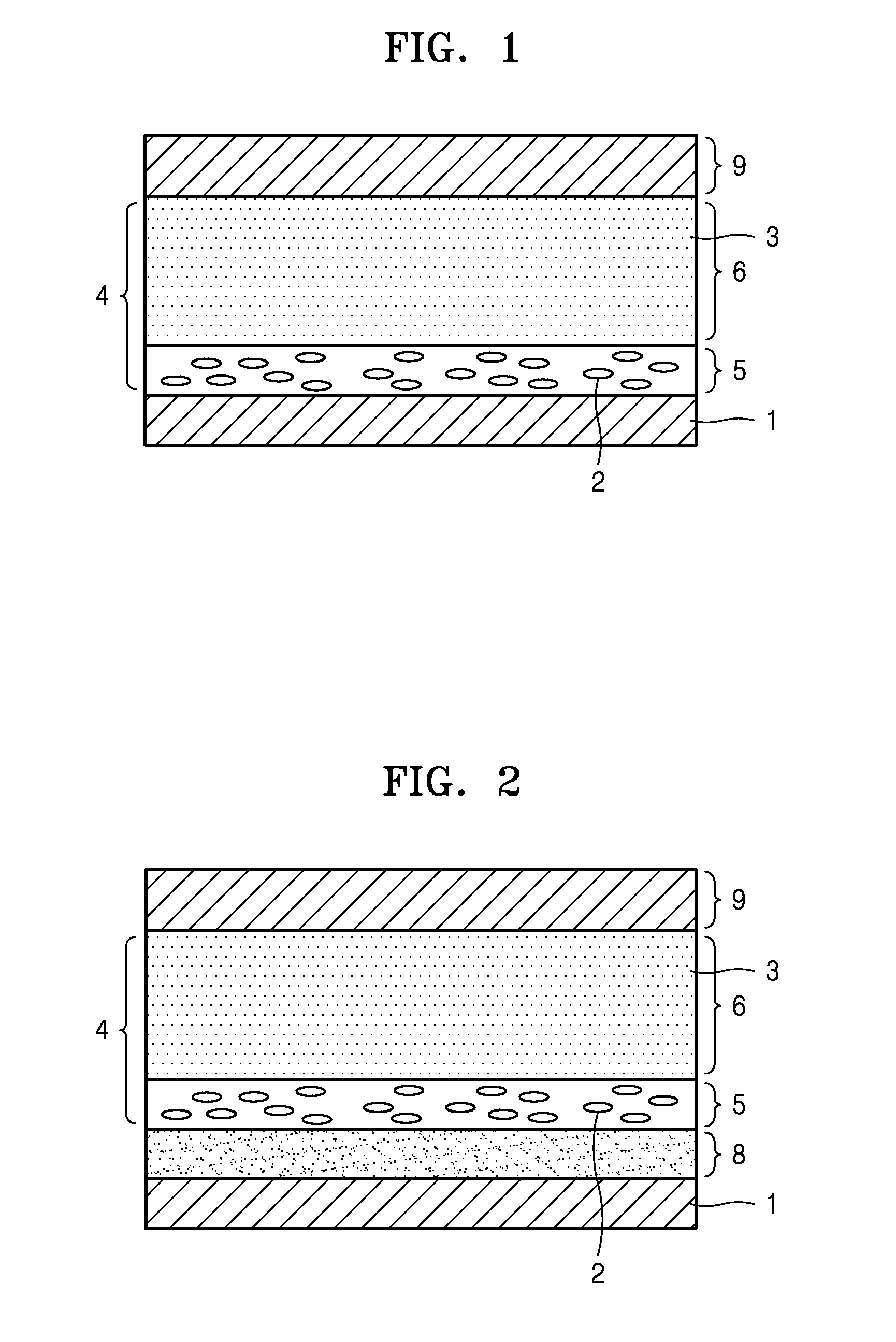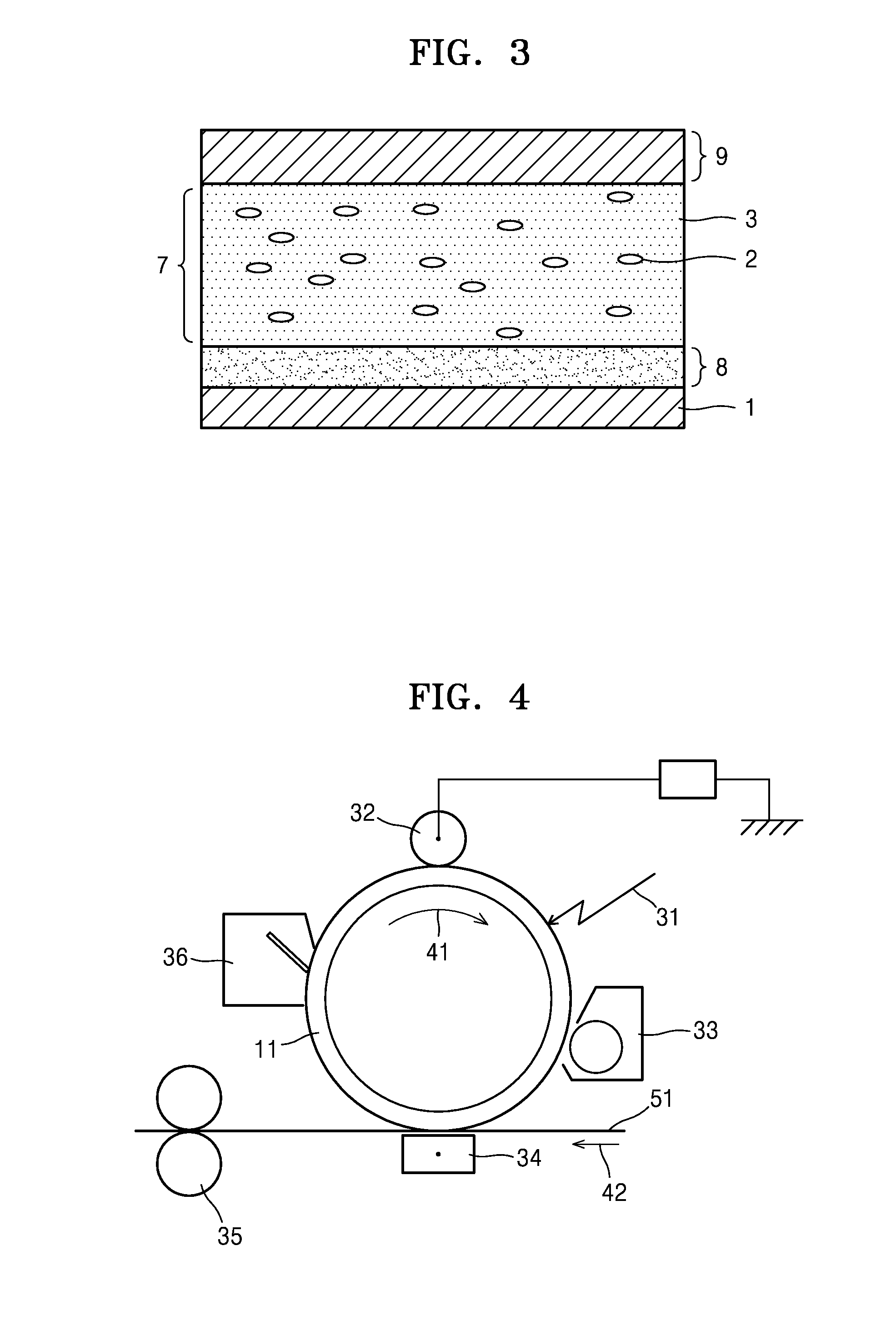Organic photoreceptor, and electrophotographic cartridge and electrophotographic imaging apparatus including the same
a photoreceptor and organ technology, applied in the direction of electrographic process apparatus, instruments, corona discharge, etc., can solve the problems of low image concentration and poor image quality, reduced sensitivity and charging characteristics, and easy wear of the surface of organic photoreceptors, etc., to achieve good internal stress relaxation, high hardness, and high elasticity
- Summary
- Abstract
- Description
- Claims
- Application Information
AI Technical Summary
Benefits of technology
Problems solved by technology
Method used
Image
Examples
example 1
[0172]30 grams (g) of a Nylon 6-66-610 terpolymer (SVP-651, available from Shakespeare Co., Ltd) having a saturation water absorptivity of 2.5% was dissolved in 235 g of a mixed alcohol solvent (methanol:1-propanol=8:2 by weight) to obtain a nylon copolymer solution. 265 g of a mixed alcohol slurry (solid content: 17.0 mass %) in which titanium dioxide particles (TTO-55N, available from Ishihara Industries Co, Ltd.) having an average primary particle diameter of about 30 nanometers (nm) to about 50 nm, not surface-treated, were dispersed using a ball mill was added to the nylon copolymer solution and then mixed. The mixture was further dispersed using an ultrasonic wave to obtain a coating composition for forming an intermediate layer. The coating composition had a solid content of about 15 mass % and comprised titanium dioxide particles (TTO-55N) and the nylon copolymer in a weight ratio of about 1.5:1.
[0173]9.5 parts by mass of T-type metal-free phthalocyanine particles and 0.5 pa...
example 2
[0184]A solid content of 50 parts by mass of dendrimeric polyacrylate (STAR-501, Mw: 18100, available from Osaka Organic Chemical Ind., Ltd. 50 mass % @ propylene glycol monomethyl ether acetate), instead of 50 parts by mass of the dendrimeric polyester acrylate oligomer (VISCOAT #1000, Mw: 1570) used in the coating solution for the protective layer of Example 1, was used to prepare a coating solution for a protective layer, followed by ring coating and drying at about 80° C. for about 10 minutes to form a protective layer having a thickness of about 5 μm on a surface of the CTL, thereby forming an organic photoreceptor.
PUM
| Property | Measurement | Unit |
|---|---|---|
| molecular weight | aaaaa | aaaaa |
| molecular weight | aaaaa | aaaaa |
| Mn | aaaaa | aaaaa |
Abstract
Description
Claims
Application Information
 Login to View More
Login to View More - R&D
- Intellectual Property
- Life Sciences
- Materials
- Tech Scout
- Unparalleled Data Quality
- Higher Quality Content
- 60% Fewer Hallucinations
Browse by: Latest US Patents, China's latest patents, Technical Efficacy Thesaurus, Application Domain, Technology Topic, Popular Technical Reports.
© 2025 PatSnap. All rights reserved.Legal|Privacy policy|Modern Slavery Act Transparency Statement|Sitemap|About US| Contact US: help@patsnap.com



